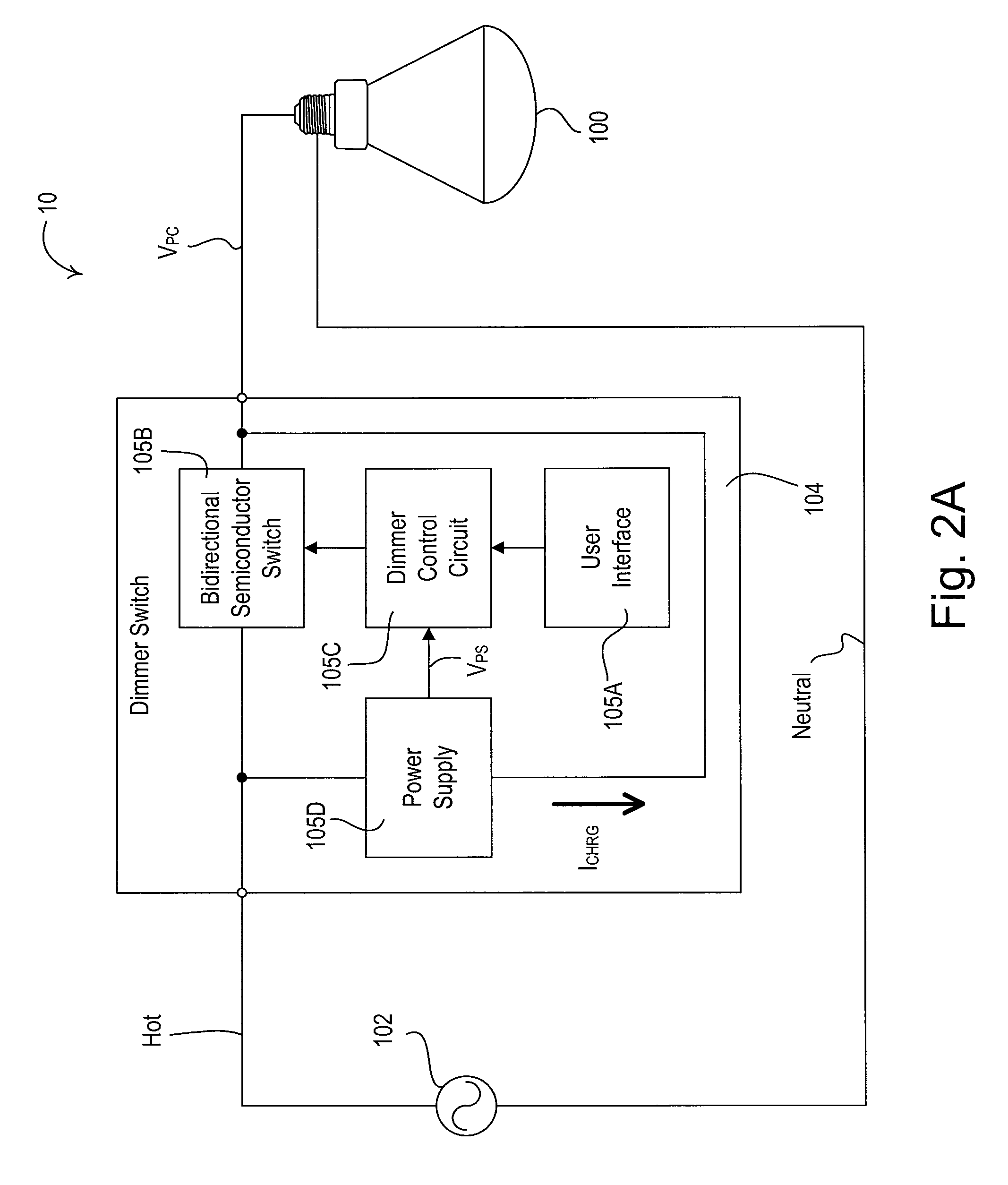Hybrid light source
a hybrid light source and light source technology, applied in the field of hybrid light sources, can solve the problems of low inability to typically dim the output level of high-efficiency light sources to very low levels, and inability to provide as high-quality color rendering
- Summary
- Abstract
- Description
- Claims
- Application Information
AI Technical Summary
Benefits of technology
Problems solved by technology
Method used
Image
Examples
second embodiment
[0107]FIG. 13A is a simplified graph showing an example curve of a monotonic power consumption PHYB with respect to the lumen output of the hybrid light source 100 according to the present invention. FIG. 13A also shows example curves of a power consumption PCFL of a prior art 26-Watt compact fluorescent lamp and a power consumption PINC of a prior art 100-Watt incandescent lamp with respect to the lumen output of the hybrid light source 100. FIG. 13B is a simplified graph showing a target fluorescent lamp lighting intensity LFL2, a target halogen lamp lighting intensity LHAL2, and a total light intensity LTOTAL2 of the hybrid light source 100 (plotted with respect to the desired total lighting intensity LDESIRED) to achieve the monotonic power consumption shown in FIG. 13A. The fluorescent lamp 106 is turned off below a transition intensity LTRAN2, e.g., approximately 48%. As the desired lighting intensity LDESIRED is decreased from the high-end intensity LHE to the low-end intensi...
fifth embodiment
[0109]FIG. 15 is a simplified block diagram of a hybrid light source 800 according to the present invention. The hybrid light source 800 comprises a high-efficiency light source circuit 840 having an LED light source 806 and an LED drive circuit 842. The LED light source 806 provides a relatively constant correlated color temperature across the dimming range of the LED light source 806 (similar to the fluorescent lamp 106). The LED drive circuit 842 comprises a power factor correction (PFC) circuit 844, an LED current source circuit 846, and a control circuit 860. The PFC circuit 844 receives the rectified voltage VRECT and generates a DC bus voltage VBUS—LED (e.g., approximately 40 VDC) across a bus capacitor CBUS—LED. The PFC circuit 844 comprises an active circuit that operates to adjust the power factor of the hybrid light source 800 towards a power factor of one. The LED current source circuit 846 receives the bus voltage VBUS—LED and regulates an LED output current ILED conduc...
PUM
 Login to View More
Login to View More Abstract
Description
Claims
Application Information
 Login to View More
Login to View More - R&D
- Intellectual Property
- Life Sciences
- Materials
- Tech Scout
- Unparalleled Data Quality
- Higher Quality Content
- 60% Fewer Hallucinations
Browse by: Latest US Patents, China's latest patents, Technical Efficacy Thesaurus, Application Domain, Technology Topic, Popular Technical Reports.
© 2025 PatSnap. All rights reserved.Legal|Privacy policy|Modern Slavery Act Transparency Statement|Sitemap|About US| Contact US: help@patsnap.com



